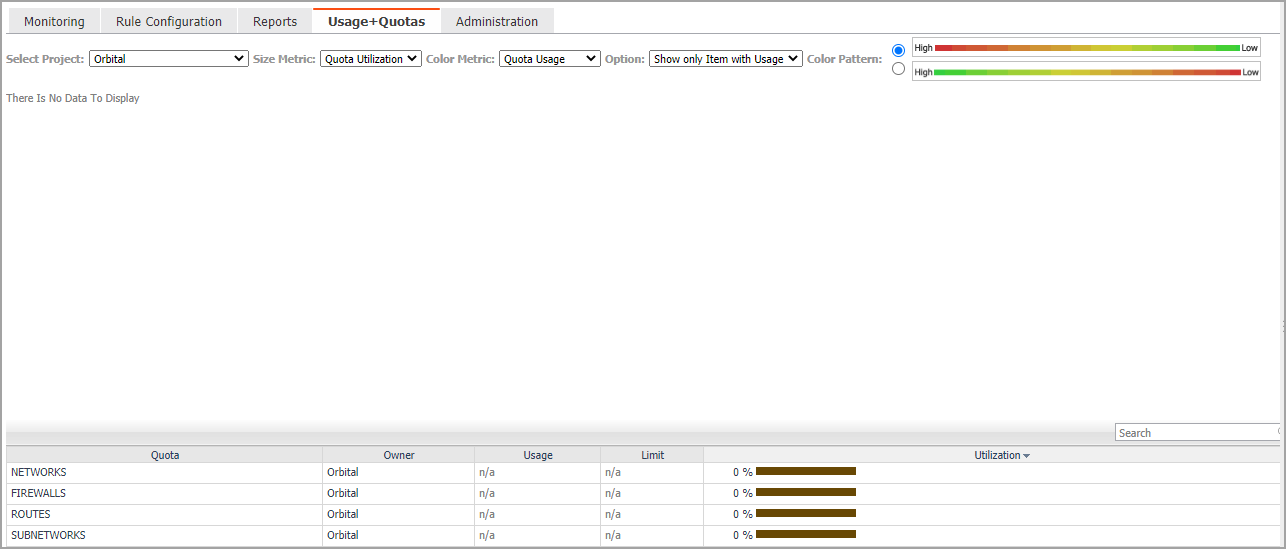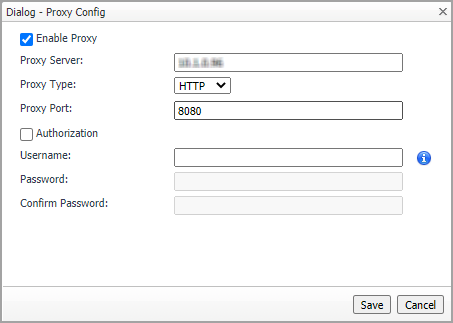Usage & Quotas Tab
Foglight Hybrid Cloud Manager for Google Cloud allows you to view the subscription details by four filters, including Quota, Owner, Usage, Limit, and Utilization.
|
3 |
|
4 |
Click Usage+Quotas in the actions bar. |
Administration Tab
The Administration tab of the Cloud Manager dashboard contains links to agent administration tasks that you can use to manage Google Cloud performance agents.
|
3 |
|
4 |
Click Administration in the actions bar. |
For more information, see the following topics:
Agents related commands
The Administration dashboard shows a list of existing agent instances and a set of agent management commands at the top of the list. Use it to verify that your agents are collecting data from the monitored environment.
The following commands are available:
|
• |
Add: Starts a workflow for creating new agent instances. For more information, see Creating a Google Cloud Agent. |
|
• |
Refresh: Refreshes the list of agent instances and their states. |
|
• |
Activate: Activates one or more selected agent instances. Activating an agent instance starts the agent process on the machine on which the agent is installed. |
|
• |
Deactivate: Deactivates one or more selected agent instances. Deactivating an agent stops the agent process on the machine on which the agent is installed. |
|
• |
Start Data Collection: Starts the data collection for one or more selected agent instances. Starting an agent’s data collection causes the agent to begin monitoring the Google Cloud platform and to send the collected metrics back to the Management Server. |
|
• |
Stop Data Collection: Stops the data collection for one or more selected agent instances. Stopping an agent’s data collection causes the agent to stop monitoring the Google Cloud platform. |
|
• |
Edit Properties: Starts a workflow for editing the properties of one or more selected agent instances. Each agent comes with a set of properties that it uses to configure its correct running state. Editing agent properties . |
|
• |
Remove: Deletes the selected agent instance. |
|
• |
Update Agent: Updates the agent package to the latest version. |
|
IMPORTANT: Updating the agent package using this command generates the previously existing credentials. However, if you update the agent package by re-deploying its .gar file through the Agent Status page, the credentials need to be re-created. To do that, select an agent instance, click Edit Properties, and configure the required credentials on the Credentials tab of the Edit Tab Manager dialog box. |
Editing agent properties
|
3 |
|
4 |
Click Administration. |
|
5 |
|
6 |
In the Edit Properties dialog box, edit the following properties, as needed. |
|
a |
Select the Enable Proxy check box to enable the proxy settings. |
|
b |
Input the host name or IP address for the Proxy Server and input the Proxy Port number. |
|
c |
If the proxy requires an authorization, select the Authorization check box, and input the Username and Password. |
|
d |
Select Authorization. Input Username and Password. |
|
• |
Automatically Install Stackdriver to VM Instances: Select this option to install stackdriver agent to collect memory metrics. |
|
• |
Click to Release Lockbox to Client: Click the button to release the lockbox to client. |
|
• |
Click to Edit Credential: Click the button to update the JSON file for the service account. |
|
• |
Add Google Cloud Agent to a new credential: Create a new credential for the Google Cloud agent. |
|
• |
Add Google Cloud Agent to an existing credential: Assign the Google Cloud agent to an existing credential. |
|
7 |
Click Save. The Edit Properties dialog box closes and the list of agent instances automatically refreshes in the display area. |



